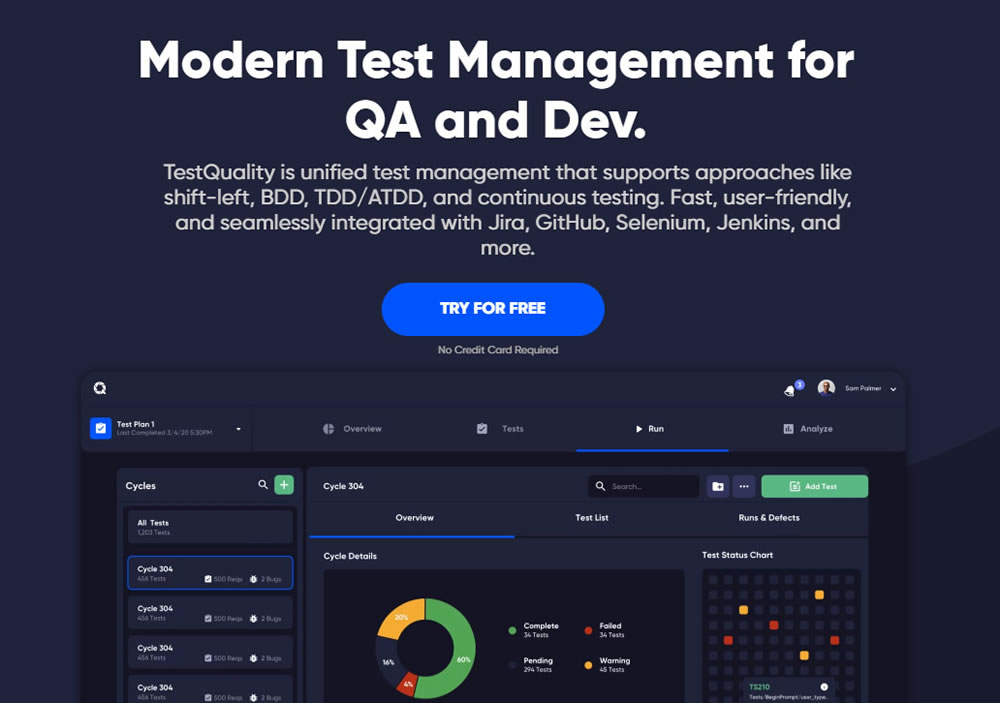Effective software testing begins with a well-structured and comprehensive test plan. It serves as the roadmap guiding testing activities, ensuring thorough coverage, and delivering reliable results. In this post, we'll delve into the key points when creating a test plan that sets the stage for successful software testing endeavors. From organizing information to verifying issues, embracing collaboration to prioritizing user experience, we'll explore key considerations and actionable insights to elevate your testing strategies.
1. Organizing and Sharing Information:
Make sure everyone on the team is on the same page by outlining the testing process's timescales, methodology, and goals in detail. Problems and hazards may be better identified and handled with the support of regular meetings and clear communication.
2. Extent and Detail:
Determine which features and functions must be tested in order to guarantee that all important and essential parts of the program are addressed.
3. Testing Scope and Environment
Establish a clear testing scope that accounts for the features that will be provided, the platforms that will be used for testing, and the parts of the product that will be impacted by development. Before deciding on a testing platform, research your intended users' demographics, device types, and operating systems. When deciding which testing environments to use, keep in mind the most widely used desktop browsers and operating systems for online applications.
Establish the primary goal of testing and define what constitutes a successful testing cycle as part of your test strategy and objectives. Consider product needs, including coverage and velocity, to establish testing goals and methods.

TestQuality Test Management allows you to optimize and simplify the process of test plan creation. TestQuality provides a user-friendly interface that allows you to easily define test scope, assign resources, and schedule testing activities thanks to the effortless integration with GitHub and Jira.
Timeline, Budget, and Outputs: Figure out how long the testing cycle will go and learn what the ultimate result will be for the users. Being able to reliably anticipate when the software will be ready to launch is crucial in this area for the organization.
Comprehend the personnel and technology that will be required to do the testing. Members of the testing team, testing units/platforms, and testing tools are all part of this.
4. Verifying Issues:
Make sure that all reported or detected software or product issues, flaws, or problems have been handled by checking and confirming in a systematic way. By doing so, we may improve the product as a whole and make sure all of the needs are satisfied.
Encourage team members to provide insightful comments, questions, and recommendations by providing feedback. All things considered, this data may help improve testing procedures, goals, and tactics moving forward.
Improve software quality, increase customer satisfaction, and guarantee the project's success by following these best practices to establish a well-structured and successful software test strategy.
Suggestions to Consider for a Winning Test Plan:
1. Embrace Collaboration:
- Early Stakeholder Involvement: Don't wait until the development cycle is underway. Involve stakeholders (developers, product managers, business representatives) from the outset. Their input on project goals, user needs, and potential risks will shape a more effective test plan.
- Subject Matter Expert (SME) Collaboration: Identify subject matter experts (SMEs) within the domain or technology being tested. Their knowledge can be invaluable in defining test cases, identifying edge cases, and ensuring test coverage aligns with industry best practices.
2. Prioritize User Experience:
- User Personas and Scenarios: Develop user personas representing different user segments and create test cases based on their expected behavior and workflows. This ensures testing caters to the diverse needs of your user base.
- Usability Testing: Dedicate resources to usability testing. Observe real users interacting with the software to identify areas for improvement in terms of intuitiveness, user interface (UI) clarity, and overall user experience.
3. Balance Automation and Manual Testing:
- Identify Automation Opportunities: Repetitive tasks like regression testing are ideal candidates for automation. Utilize testing frameworks and tools to streamline these processes and free up tester bandwidth for more exploratory and critical testing.
- Maintain Manual Testing Focus: While automation offers efficiency gains, don't neglect the importance of manual testing. Manual testing allows testers to explore the software intuitively, identify unexpected behavior, and ensure a smooth user experience that goes beyond basic functionality.
4. Clarity and Communication:
- Clear and Concise Language: Avoid technical jargon and ambiguity. Use plain language that everyone involved in the project can understand. This fosters better communication and reduces misunderstandings.
- Maintainable Documentation: Structure your test plan in a logical and easy-to-navigate way. Utilize tables, diagrams, and clear headings for improved readability.
- Version Control: Version control systems like Git allow you to track changes made to the test plan over time. This facilitates reverting to previous versions if necessary and provides a clear audit trail for future reference.
5. Communication is Key:
- Regular Test Progress Updates: Schedule regular meetings or utilize communication channels to update stakeholders on testing progress, identified defects, and any roadblocks encountered.
- Transparent Reporting: Generate clear and concise test reports that summarize findings, defect logs, and overall test coverage. These reports should be easily accessible to stakeholders for informed decision-making.
By incorporating these suggestions and addressing potential pain points, you can develop a robust test plan that serves as a cornerstone for successful software development. Remember, a well-crafted test plan is not a static document; it should adapt and evolve alongside your project to ensure comprehensive testing and a high-quality final product.
In conclusion
A meticulously crafted test plan is more than just a document; it's the foundation of your software testing efforts. By implementing best practices such as embracing collaboration, prioritizing user experience, and maintaining clarity in communication, you can create a test plan that drives efficiency, enhances quality, and ultimately leads to the successful delivery of software products.
Remember, adaptability and continuous improvement are key; regularly review and refine your test plan to ensure it remains aligned with project goals and evolving requirements. With a well-executed test plan in place, you'll be well-equipped to navigate the complexities of software testing and achieve your desired outcomes with confidence.






